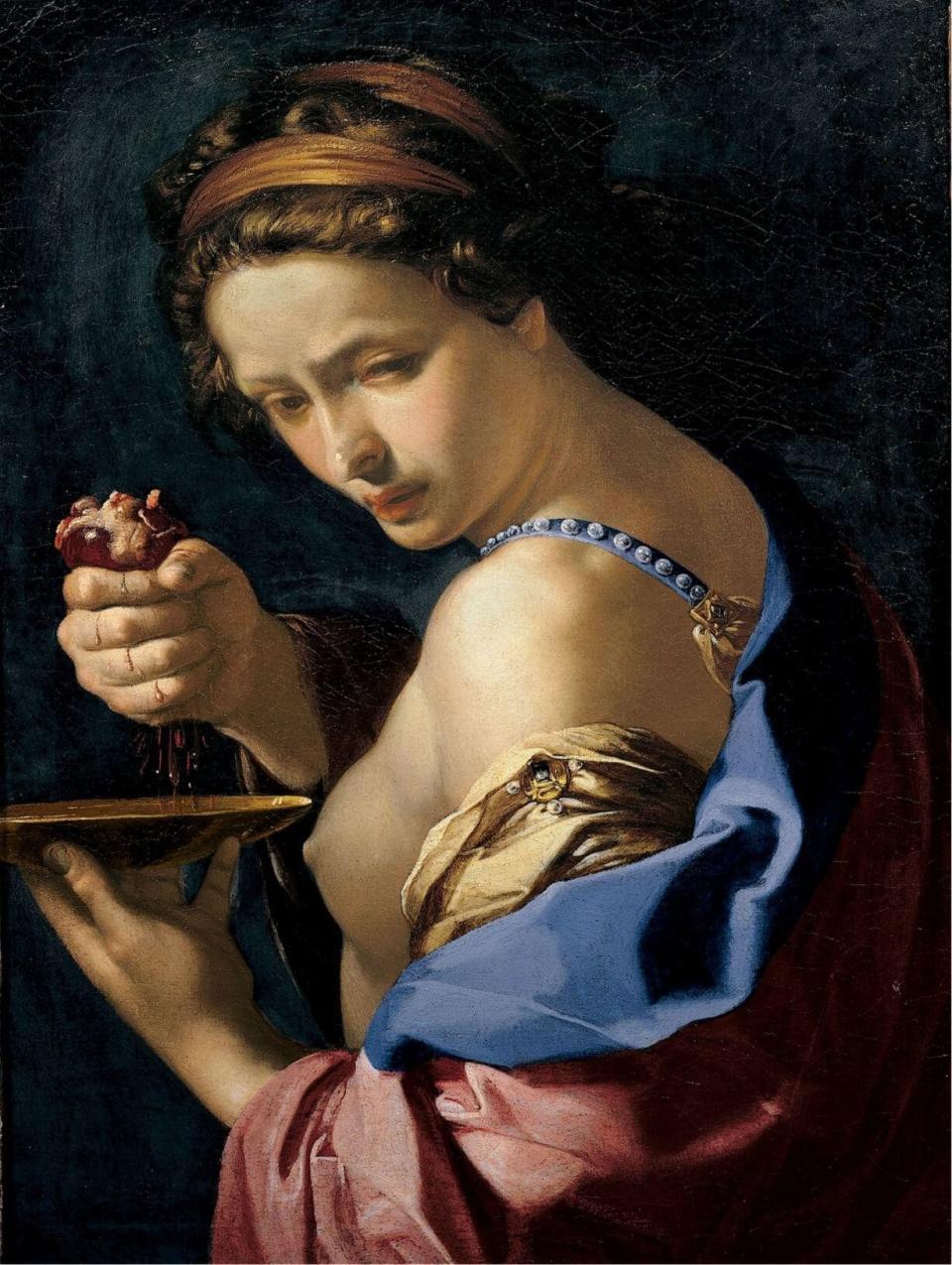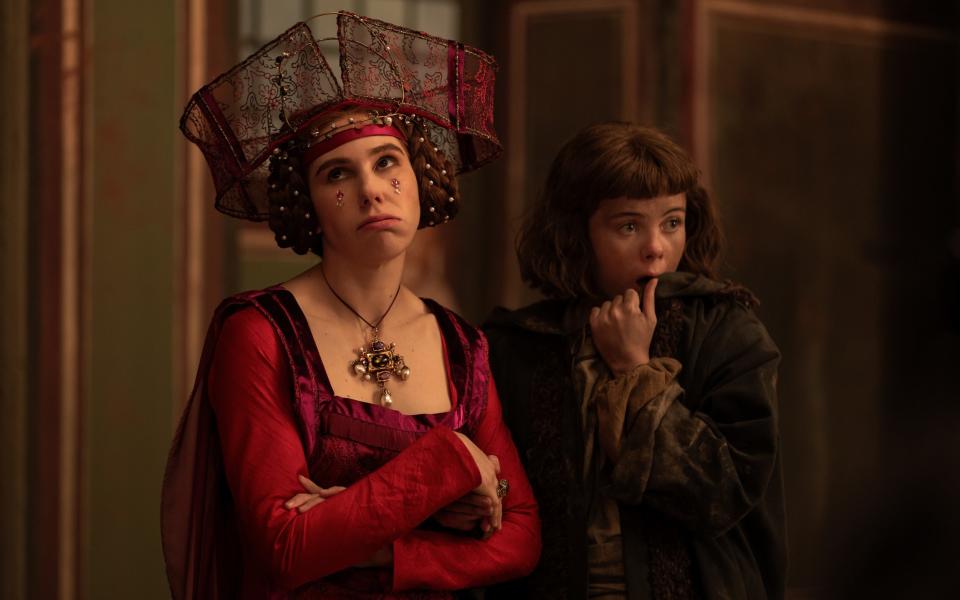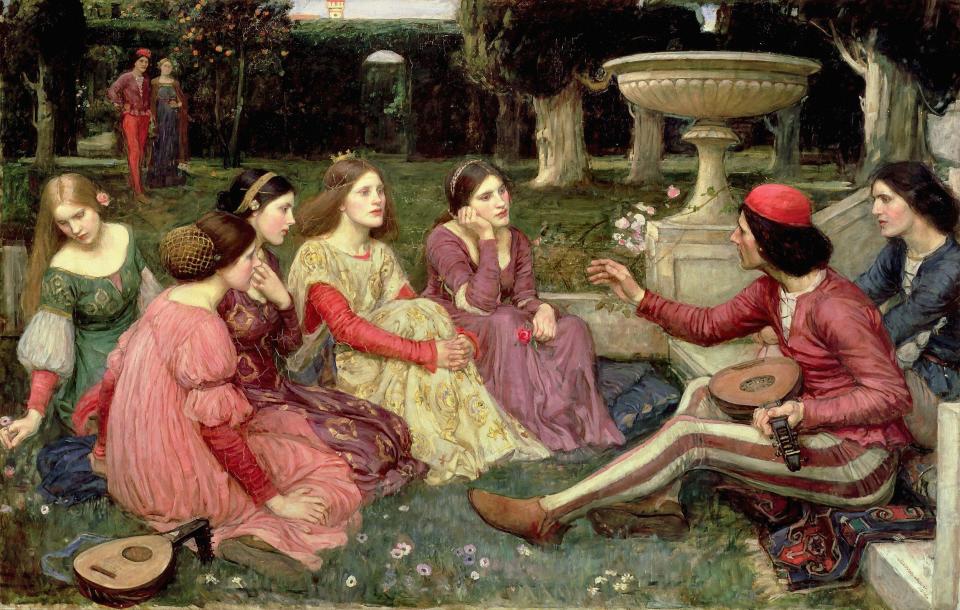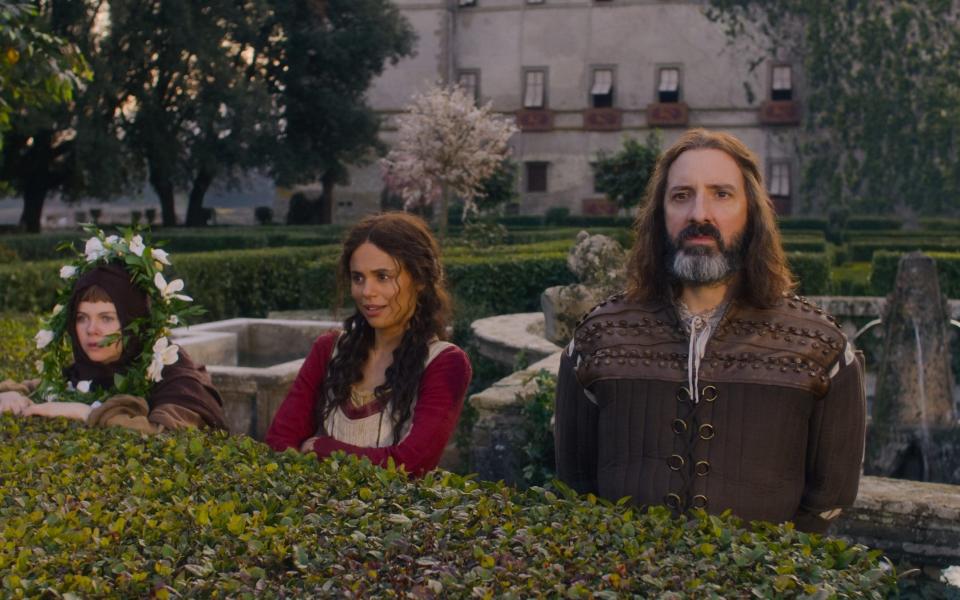A 700-year-old story – Giovanni Boccaccio’s Decameron, written and set in Italy at the time of the Black Death – is having its day again. During the Covid pandemic, it became a Twitter trend, a favourite of virtual book clubs, and was hailed as the text “of the moment” by Vogue. This summer, a “soapy period dramedy” adaptation is coming to Netflix, promising to take “viewers back into quarantine”.
Boccaccio is one of the 14th century’s triumvirate of great Italian writers, along with Dante and Petrarch. The Decameron, his most famous work, is a collection of tales: 100 stories told by 10 storytellers over 10 days (with two days off to wash their hair and think about Christ). It was inspired by other compendiums, from India and the Middle East – some of which, including One Thousand and One Nights and The Seven Wise Masters, were also overshadowed by impending death – and itself inspired Chaucer’s The Canterbury Tales. It is fabulously entertaining, sophisticated – and terrifically rude.
The Decameron opens as the Black Death – the bubonic plague, which some think may have originated in China – is ravaging Florence. Its symptoms are terrifying, the deaths horrific. Its first sign, we are told, is “the appearance of certain swellings in the groin or the armpit, some of which were egg-shaped whilst others were roughly the size of the common apple”. Soon, these lumps would appear “all over the body” and most victims die within days; the disease is so infectious that it spreads “with the speed of a fire”. Medicine is not working, and even family members are abandoning each other. The city gates are closed – no one can enter. Some are trying to live in isolation, while others are partying as if the rules don’t apply to them. Meanwhile, the bodies keep piling up in the streets.
Against this backdrop, seven ladies, all between 18 and 27, beautiful, intelligent and high class, meet three men in Santa Maria Novella, one of the iconic churches of Florence. They agree to leave the city, to go (with servants) to one of their country estates, and to wait out the plague there, where they won’t be confronted by so much horror.
Once in the countryside, with their servants there to look after them, this group – known as the brigata – while away the time making music, dancing and playing chess. And they agree that in the heat of the day they will sit around and tell each other stories.


They tell tales of trickery, murder and comic insults: a woman is served her secret lover’s heart by her possessive father; a gullible painter is convinced by pranksters that he is pregnant, blames his wife’s preference for going on top during sex and purchases an extremely effective (and expensive) abortifacient; a crusader is transported by magic from Saladin’s court to Italy just in time to prevent his wife remarrying.
Many of the most famous tales are anticlerical, amoral, antiauthoritarian – and sexually explicit. In one story, a saintly hermit seduces a teenage girl by telling her that to be a good Christian, she has to send the devil to hell, explaining that his erect penis is the devil, and her vagina is hell. Another tells of a friar who has sex with a married woman by pretending to be the Angel Gabriel, but who ends up being paraded through the town covered in honey and feathers and tormented by flies. A third details how two friends have sex with each other’s wives, and when it all comes out in the open, settle down to a happy life of swinging.
Wives are unfaithful and husbands are stupid. In the second story of the seventh day, Peronella, a Neapolitan bricklayer’s wife, is having an affair with a young man named Giannello. One day, her husband comes back unexpectedly, so Giannello hides himself in a barrel – but, unfortunately, the husband announces he has sold the barrel for five ducats. Peronella immediately responds that she has sold it for seven, and the buyer is surveying it from within. Giannello leaps out and declares that the barrel needs cleaning before he will buy it.
While the husband gets inside the barrel and scrubs it out, his wife leans her head over its opening to instruct him, while her lover, “in the manner of a wild and hot-blooded stallion mounting a Parthian mare”, has sex with her from behind – and then orders her husband to carry the barrel round to his house.
The 13th and 14th centuries in Europe had seen the rise of what we might think of as the middle classes, and the growth of political structures – parliament in England, and the popolo in Italian city-states – which enabled greater representation. Boccaccio, the illegitimate son of a man who worked for the Bardi banking house, and himself a student of law, was representative of such recent social change. Across the continent, monetised urban marketplaces were increasingly important, alongside the development of universities, an increased focus on relativistic views of the world, and the burgeoning use of vernacular languages.
Latin and French were the established languages of literature in Europe. But at the turn of the 14th century, Dante’s use of the Tuscan tongue in his narrative poem The Divine Comedy had marked a sea-change in authorial ambition. Likewise, Boccaccio’s use of the Tuscan vernacular in the Decameron (the first major prose work to do so) signalled a desire to be accessible, to reach more diverse audiences than Latin texts could.
This occasioned anxiety. A wonderful letter survives written by Petrarch to Boccaccio, in which he damns the Decameron with faint praise, saying that it is “written in our mother tongue and published, I presume, during your early years,” as it is “written in prose and for the multitude”. He adds that he himself has only skimmed it, and although it is vulgar, that may be excused because Boccaccio must have been thinking about the “people likely to read such tales” – Petrarch makes it clear that he thinks Boccaccio is dumbing down, but that none the less there are some good bits. Its vulgarity outraged others – the Decameron was one of the texts burnt in Florence in 1497 in the original “bonfire of the vanities”, inspired by the Dominican zealot Savonarola.


The Decameron takes place in a zone removed from everyday life – the country house isolated from the horrors outside. Time works differently here: usual business has been suspended, the world has been turned upside down. Netflix winkingly describes its adaptation as like “Love Island, but back in the day”. And it’s true that reality TV has a similar logic: take people away from their normal lives, suspend the ordinary rules, throw a group together without a break from one another – and see what happens. (This is also, of course, the logic of Lord of the Flies and of innumerable murder mysteries set on islands or in sealed-off houses.)
One of the fascinations of reality TV, of shutting people up together for entertainment, is the removal of social status – the ability of underdogs to triumph over people who think they are alphas. But in Boccaccio’s text, the servants are firmly kept in their place. The storytellers are all of the “gentle” – high – class, and the servants are there not to tell stories, but to minister to the wants of their masters and mistresses.
There is a significant moment on day six, when a row between the servants penetrates the consciousness of the brigata, and they are summoned to explain themselves. It turns out that they were arguing about promiscuity. Tindaro was insisting that a local girl had lost her virginity on her wedding night, while Licisca declared that not a single woman of her acquaintance had waited for marriage, and that “John Thomas” did not have to “force an entry to Castle Dusk” on the wedding night.
The brigata laugh heartily, rule in favour of Licisca, and then tell her to shut up and go back to the kitchen unless she wants to be whipped. Compare this with Chaucer’s The Canterbury Tales. Writing a generation later and deeply inspired by Boccaccio, Chaucer invented a very different kind of tale-telling group: his pilgrims include a Cook, a Miller, a Merchant, a Shipman and a Parson. When the Miller drunkenly interrupts, he is not silenced – he tells his story, and makes his voice heard.


After the Black Death, the idea of equality in the face of death loomed large in the arts. The Danse Macabre, depicted in wall paintings and poems from the early 15th century, imagined a personified Death dancing in turn with people from all levels of society. A famous version was painted on the wall of the Cemetery of the Innocents, in Paris, in 1424-1425, and inspired a poem by John Lydgate and its illustration in Old St Paul’s, in London. Tomb design changed in the wake of the plague: a fashion developed amongst the wealthy for “cadaver” tombs that depicted a richly-clothed body above and a rotting corpse below, graphically reminding the viewer that everyone faces the same fate in the end.
Although the immediate effects of the plague were horrific – perhaps 50 per cent of Europe’s population died – its social consequences were varied. In general, it was a catalyst for greater social mobility and an economic boom. With fewer people to do the work, wages went up and people gained more autonomy. Governments passed sumptuary laws (to prevent upstarts from wearing certain kinds of fabrics and clothes) and labouring statutes (to depress wages), but these were not effective.
In some parts of Europe, slave labour was used to fill the gap caused by the plague. In Florence, for instance, an edict in 1363 permitted the unlimited import of slaves, as long as they were not Christian. These slaves came primarily from eastern Europe and beyond and were trafficked through Crimea. In our own time, the effects of our much more minor pandemic have been socially deeply destructive, serving to widen inequality and depress standards of living overall.


Pandemics, then as now, are horrifying to live through, while also being compelling to write about. When Boccaccio wrote his vivid description of the Black Death in Florence, he was drawing on historical reality (his father was the minister of supply at the time, in charge of implementing emergency measures relating to food shortages and sanitation), but he was also able to take inspiration from much older literature about plagues, including the work of Paul the Deacon, the 8th-century Lombard historian.
Writers have always been fascinated by disease: the Iliad opens with a description of a plague in the Greek camp; later famous plague texts include Daniel Defoe’s A Journal of the Plague Year (1722) and Albert Camus’s La Peste (1947), which also enjoyed a surge of interest during Covid.
But the particular fascination of the Decameron is that it engages both with how people behave in a crisis and also with what happens when you isolate those characters from that crisis. Its luxurious story-telling setting focuses on literature as fun, as an exploration of the imagination, as something that delights. In the author’s epilogue, Boccaccio emphasises that stories “may be harmful or useful, depending on the listener”, and that these ones were told “in a place designed for pleasure”. The tale-telling interlude is a therapeutic escape. And although there is a dark edge to many of the tales, the brigata are escaping the horrors of their real lives – while all the time ignoring the labour that enables them to live so well.
It is fitting that Boccaccio’s tales – which he tells us are not for scholars, but for women who want to have fun – have been transposed to the 21st century’s medium of mass entertainment. Can television capture the gorgeous language, sophisticated parody and formal complexity of Boccaccio’s masterpiece? I’m waiting on the sofa.
The Decameron is on Netflix from July 25; Marion Turner’s books include Chaucer: A European Life
Broaden your horizons with award-winning British journalism. Try The Telegraph free for 3 months with unlimited access to our award-winning website, exclusive app, money-saving offers and more.
